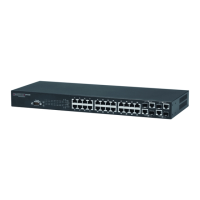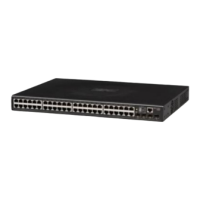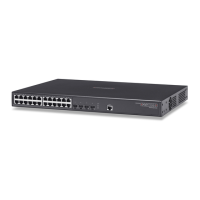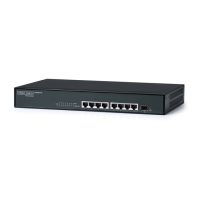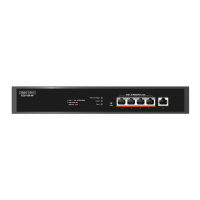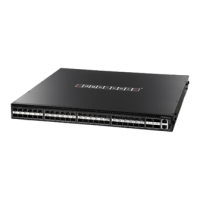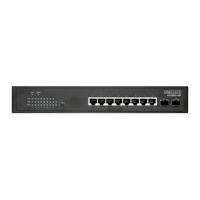C
HAPTER
2
| Initial Switch Configuration
Managing System Files
– 77 –
used for authentication, provides the password “greenpeace” for
authentication, and the password “einstien” for encryption.
Console(config)#snmp-server view mib-2 1.3.6.1.2.1 included
Console(config)#snmp-server view 802.1d 1.3.6.1.2.1.17 included
Console(config)#snmp-server group r&d v3 auth mib-2 802.1d
Console(config)#snmp-server user steve group r&d v3 auth md5 greenpeace priv
des56 einstien
Console(config)#
For a more detailed explanation on how to configure the switch for access
from SNMP v3 clients, refer to "Simple Network Management Protocol" on
page 382, or refer to the specific CLI commands for SNMP starting on
page 569.
MANAGING SYSTEM FILES
The switch’s flash memory supports three types of system files that can be
managed by the CLI program, web interface, or SNMP. The switch’s file
system allows files to be uploaded and downloaded, copied, deleted, and
set as a start-up file.
The types of files are:
◆ Configuration — This file type stores system configuration information
and is created when configuration settings are saved. Saved
configuration files can be selected as a system start-up file or can be
uploaded via FTP/TFTP to a server for backup. The file named
“Factory_Default_Config.cfg” contains all the system default settings
and cannot be deleted from the system. If the system is booted with
the factory default settings, the switch will also create a file named
“startup1.cfg” that contains system settings for switch initialization,
including information about the unit identifier, and MAC address for the
switch. The configuration settings from the factory defaults
configuration file are copied to this file, which is then used to boot the
switch. See "Saving or Restoring Configuration Settings" on page 78 for
more information.
◆ Operation Code — System software that is executed after boot-up,
also known as run-time code. This code runs the switch operations and
provides the CLI and web management interfaces. See "Managing
System Files" on page 104 for more information.
◆ Diagnostic Code — Software that is run during system boot-up, also
known as POST (Power On Self-Test).
Due to the size limit of the flash memory, the switch supports only two
operation code files. However, you can have as many diagnostic code files
and configuration files as available flash memory space allows. The switch
has a total of 32 Mbytes of flash memory for system files.

